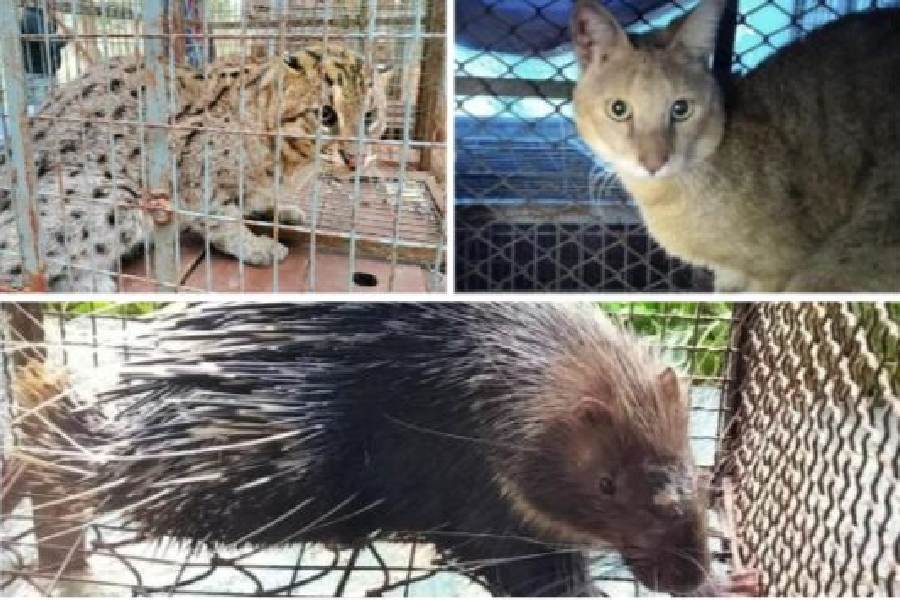Four fishing cats caught from human settlements in a pocket of Howrah over the past year were on Thursday released by the forest department in wetland habitats not far from the areas they were found in.
The foresters also released four jungle cats and four porcupines rescued from different areas of the Uluberia range of the Howrah forest division.
The animals, especially the fishing cats, are often the reason behind depleting fish stock in water bodies. The animals also sneak into poultry farms for food. The conflict has often resulted in fishing cats being beaten or poisoned to death. Howrah has in the past witnessed multiple such incidents.
Thursday’s initiative stands out in the backdrop of the conflict. More so because several fishing cats that had been trapped from Howrah water bodies and the wetlands at Banshipota near Dankuni last year were released elsewhere after fishermen and villagers complained to foresters that they were depleting their stock of fish. This newspaper had reported in December about a complaint in this regard filed by conservationists to the top forest officer of the state.
A group of conservationists protested, arguing that the relocation was taking the fishing cats away from their natural habitat through human intervention.
“We released the animals in wetlands along the Damodar river, near areas they were rescued from. The animals were released after they spent some time at Garchumuk Deer Park, where some of them underwent treatment for injuries,” said a forest
officer in Howrah.
One of the fishing cats was found inside the bathroom of a house in a village in Bagnan II block in March last year. Another was found in a poultry farm in a village in Shyampur block.
“The challenge is to bring villagers on board. A poultry farmer or the owner of a pond who sells fish is naturally antagonistic towards fishing cats and jungle cats as they pose a threat to his income. We are telling them to make stronger nets for cages in the poultry,” said Chitrak Pramanik, a wildlife conservation enthusiast who was instrumental in the release of the animals.
Pramanik works with a team of young and like-minded people to spread awareness about animals.
They tell villagers that the fishing cat, baghrol in Bengali and Bengal’s state animal, is included in Schedule I of the Indian Wildlife (Protection) Act, 1972. It is supposed to receive the highest conservation measures — akin to tigers and elephants, said animal activists. Killing a fishing cat can invite a jail term of three to seven years and/or a fine of up to Rs 30,000.
The nocturnal animal thrives in wetlands. A top predator in its habitat, fish is its favourite prey. Shrinking wetlands have dwindled their numbers and forced them to stray into human settlements and prey on fish and livestock.
On Thursday, the local MLA, Arunava Sen, and panchayat members were present during the release of the animals.
“Their (MLAs) presence is of a lot of help. They can persuade residents of the area to help in conservation rather than target the animals,” said Pramanik.
